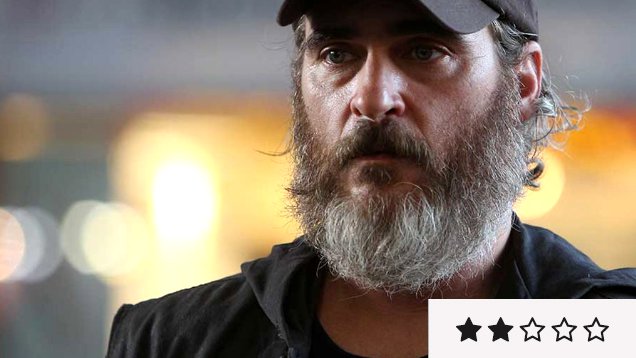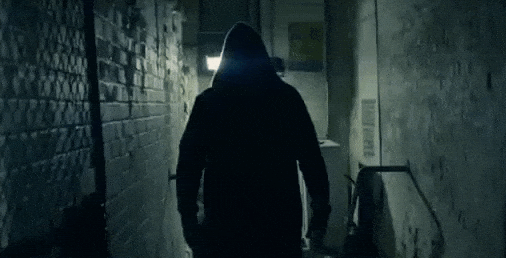You Were Never Really Here is a nasty case of style over substance

Trying to keep track of the number of soul-piercing stares in a Joaquin Phoenix performance is like counting the whiskers in his beard: not for the short on time or, due to sheer volume, the sound of mind. Given the actor’s unnerving ability to generate swelling intensity – like a kind of possessed human radiator – and his predilection for playing social misfits, he is a natural fit for the role of a misanthropic hitman.
Phoenix’s morose style recently infused Jesus Christ – hardly the easiest character to humanise – with unusual depth and a marketable point of difference to cinema’s many other sons of God. In director Garth Davis’ pensive and plodding Mary Magdalene he presented JC as a never angrier, introspective anarchist.
The same cannot be said, about the creation of depth, of Phoenix’s performance as a brutal killer in You Were Never Really Here. It is deep acting inside shallow characterisation. Scottish director Lynne Ramsay (adapting Jonathan Ames’s novella) stylishly experiments with the ‘cold-blooded murderer who cares for his mother’ trope, but comes up only with blood-spattered armchair philosophy.

The opening shot is both impersonal and intensely human: a close-up of a man, who we see just enough of to recognise as Phoenix, breathing in and an out with his head in a plastic bag. While the recent Australian drama Breath used auto-erotic asphyxiation to boldly connect grief and thrill-seeking, arguing danger and dolor can be weird perversities of each other, here we see the cheap thrills of a sadist.
Soon the war vet Joe (Phoenix) is in a corridor clutching a ball-peen hammer (his weapon of choice) in a shot framed below the waist. His hands pick up duct tape. When he leaves the building, Ramsay and cinematographer Thomas Townend linger behind Phoenix’s neck. It is as if the director is afraid to look her own protagonist in the face; convinced, perhaps, that only empty and soulless eyes would stare back.
Joe’s grisly line of work leads him to rescue 13-year-old Nina (Ekaterina Samsonov), the daughter of a senator, from a ring of paedophiles. Joe doesn’t quite have the emptiness of the titular Damien-esque character in Ramsay’s previous film We Need To Talk About Kevin, a rumination on the unanswerable riddle of nature versus nurture. The depth in that film wasn’t found in the devil cipher but in his soul-searching mother, whose self-flagellating memories form a series of flashbacks.
We don’t get a character as detailed, vivid, human as her in You Were Never Really Here. Nina is the girl whose eyes glow like opals, but one senses Ramsay would rather chainsaw her film to pieces, Leatherface style, than seriously entertain the idea that purity of youth can cure a monster. This is not a story of redemption, despite a quasi-religious, baptism-like sequence showing a suited-up Phoenix cradling a body as he enters water.
It’s an arresting image. But as Jane Campion demonstrated in her magnificent 1993 period drama The Piano, framing actors in fancy dress partially or entirely submerged cannot help but look poetic. The sensation that You Were Never Really Here is a case of style over substance isn’t exactly dispelled by Townend’s jazzy compositions (which include the sight of a pair of blood-smeared broken glasses because hey, the shot looks pretty cool, and it’s an easy image to attach meaning to if one resolved to invent it).
Is it too much to ask that a film about a man who caves people’s heads in with a hammer might be about, or stand for, something?
The same can be said of the repetition of a tactic Ramsay deployed in We Need to Talk About Kevin. It was also hackneyed back then: playing an ironic selection of music over key scenes, in the expectation audiences will relish the disconnect between sweet or poignant song (i.e. The Air That I Breathe, Never Been to Me) and foul dramaturgy.
Is it too much to ask that a film about a man who caves people’s heads in with a hammer might be about, or stand for, something? The message that the protagonist could be dead inside – thus ladies and gentlemen, he was never really here – is beyond reductive. This film isn’t escapist entertainment; it is brutal and bleak. Stylish? Yes. Deep? No way.

















